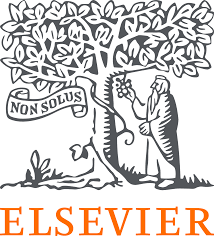
 ‘This book will serve as a great thought-provoking strategic thinking tool for practitioners as well as a roadmap for place communities of any form and shape willing to build a vision and invest in a reality that supports their desired reputation and image. The impressive range of examples provided illustrating imaginative places and imaginative actions by different stakeholders across the globe makes for an excellent read for all marketing and branding specialists, planners, policymakers, and public administrators but also for community leaders, citizens and all those wanting to learn more about the potential of place branding as a tool to build strong and successful communities.’ Laura Ripoll González for quarterly journal of Place Branding and Public Diplomacy
‘This book will serve as a great thought-provoking strategic thinking tool for practitioners as well as a roadmap for place communities of any form and shape willing to build a vision and invest in a reality that supports their desired reputation and image. The impressive range of examples provided illustrating imaginative places and imaginative actions by different stakeholders across the globe makes for an excellent read for all marketing and branding specialists, planners, policymakers, and public administrators but also for community leaders, citizens and all those wanting to learn more about the potential of place branding as a tool to build strong and successful communities.’ Laura Ripoll González for quarterly journal of Place Branding and Public Diplomacy
 ‘How can cities and countries transform clichés and stereotypes? Govers asks how people form and share opinions, and how cities and countries work with their images. He offers tempting tidbits about many places. One, the Emirate of Dubai, built date-palm shaped residential islands to expand its coastline, placed helpers for tourists in subways and hotels, and largely dispelled cliché images of veiled women, deserts, and camels. He describes the "--stan" effect, in which countries such as Kazahkstan are seen as corrupt and war-torn. These examples hooked my attention, but a case study or interview on each transformation, and how visitors, in their own words, experienced it, could greatly enhance the book by engaging readers more. Govers raises many questions about how and why we perceive places or countries negatively or positively and what can change our minds. Examples include Bhutan, The Hague, Den Bosch in Holland, and Barcelona. Advertising does not raise image, he maintains, but a positive and creative experience—an "Imagineering”—does. The text cries out for illustrations of the innovations described. It straddles a territory of marketing, branding, and tourism (which is greatly boosted if a locale is used in a film—just as "Lords of the Rings" boosted interest in New Zealand). Small type on image rankings charts is hard to read. Presenting the information differently could increase reader friendliness. Nor did the cover say "community" to me. Yet the book poses vital, intriguing questions.’ Judge, 27th Annual Writer’s Digest Self-Published Book Awards.
‘How can cities and countries transform clichés and stereotypes? Govers asks how people form and share opinions, and how cities and countries work with their images. He offers tempting tidbits about many places. One, the Emirate of Dubai, built date-palm shaped residential islands to expand its coastline, placed helpers for tourists in subways and hotels, and largely dispelled cliché images of veiled women, deserts, and camels. He describes the "--stan" effect, in which countries such as Kazahkstan are seen as corrupt and war-torn. These examples hooked my attention, but a case study or interview on each transformation, and how visitors, in their own words, experienced it, could greatly enhance the book by engaging readers more. Govers raises many questions about how and why we perceive places or countries negatively or positively and what can change our minds. Examples include Bhutan, The Hague, Den Bosch in Holland, and Barcelona. Advertising does not raise image, he maintains, but a positive and creative experience—an "Imagineering”—does. The text cries out for illustrations of the innovations described. It straddles a territory of marketing, branding, and tourism (which is greatly boosted if a locale is used in a film—just as "Lords of the Rings" boosted interest in New Zealand). Small type on image rankings charts is hard to read. Presenting the information differently could increase reader friendliness. Nor did the cover say "community" to me. Yet the book poses vital, intriguing questions.’ Judge, 27th Annual Writer’s Digest Self-Published Book Awards.
 ‘If you’re looking to expand your place branding toolkit and focus your energies on symbolic actions instead of cut-and-paste marketing campaigns, this is the text for you.’ City Nation Place
‘If you’re looking to expand your place branding toolkit and focus your energies on symbolic actions instead of cut-and-paste marketing campaigns, this is the text for you.’ City Nation Place
 ‘The general reader will enjoy this book as it is easy to understand for a nonexpert audience.’ Ioana Stoica for Governance: An International Journal of Policy, Administration and Institutions
‘The general reader will enjoy this book as it is easy to understand for a nonexpert audience.’ Ioana Stoica for Governance: An International Journal of Policy, Administration and Institutions
 ‘With the explicit aim of regaining control on community identity, the reader is offered a lean flow, reaching a deeper description of how Imaginative Communities collectively think, and what they convey to the outside and experience from the inside. The reference to theories or thorough review of examples in anecdotal mini-cases, from the nation branding of Kazakhstan or Finland, the latter based on digital “shareables” like emojis, or Estonia, based on the innovations of open digital citizenship, to smaller and small cities like Eindhoven or Den Bosch, both in the Netherlands. Within this great variety of references to cases, perhaps the greatest synthesis is offered by the author in the final chapter, “How we rise enlightened communities,” where the different themes and threads as presented so far converge, sketching a way forward beyond traditional destination marketing. Admiration, and therefore reputation through media framing and ultimately through earned content on social media, is what “Imaginative Communities” convey by breaking stereotypes.’ Marco Bevolo for Journal of Tourism Futures
‘With the explicit aim of regaining control on community identity, the reader is offered a lean flow, reaching a deeper description of how Imaginative Communities collectively think, and what they convey to the outside and experience from the inside. The reference to theories or thorough review of examples in anecdotal mini-cases, from the nation branding of Kazakhstan or Finland, the latter based on digital “shareables” like emojis, or Estonia, based on the innovations of open digital citizenship, to smaller and small cities like Eindhoven or Den Bosch, both in the Netherlands. Within this great variety of references to cases, perhaps the greatest synthesis is offered by the author in the final chapter, “How we rise enlightened communities,” where the different themes and threads as presented so far converge, sketching a way forward beyond traditional destination marketing. Admiration, and therefore reputation through media framing and ultimately through earned content on social media, is what “Imaginative Communities” convey by breaking stereotypes.’ Marco Bevolo for Journal of Tourism Futures
 ‘IMAGINATIVE COMMUNITIES: Admired Cities, Regions and Countries by Robert Govers is a feat of informative facts and fancies to set the imagination soaring... making it quite the timely read as civilization heads into the year 2020 and beyond’. With a rating of 4.2 (of 5) the book is IndieReader Approved.
‘IMAGINATIVE COMMUNITIES: Admired Cities, Regions and Countries by Robert Govers is a feat of informative facts and fancies to set the imagination soaring... making it quite the timely read as civilization heads into the year 2020 and beyond’. With a rating of 4.2 (of 5) the book is IndieReader Approved.
![]() ‘IMAGINATIVE COMMUNITIES is chock full of facts, charts, and information that can help guide local communities to a better sense of how they can become visible across the globe, while creating a positive impact. Its strength is in the examples it provides, from Bhutan’s focus on happiness to Barcelona’s branding through modernist architecture’. IndieReader
‘IMAGINATIVE COMMUNITIES is chock full of facts, charts, and information that can help guide local communities to a better sense of how they can become visible across the globe, while creating a positive impact. Its strength is in the examples it provides, from Bhutan’s focus on happiness to Barcelona’s branding through modernist architecture’. IndieReader
 ‘Community leaders, city planners, and policy makers will appreciate these practical guidelines for implementing projects that build and communicate community identity.’
‘Community leaders, city planners, and policy makers will appreciate these practical guidelines for implementing projects that build and communicate community identity.’
Booklife Reviews
 ‘This book is likely to appeal to a wide range of audiences, such as government and commercial organizations, students and researchers.’
‘This book is likely to appeal to a wide range of audiences, such as government and commercial organizations, students and researchers.’
Tourism Management
Get a free copy of the first chapter